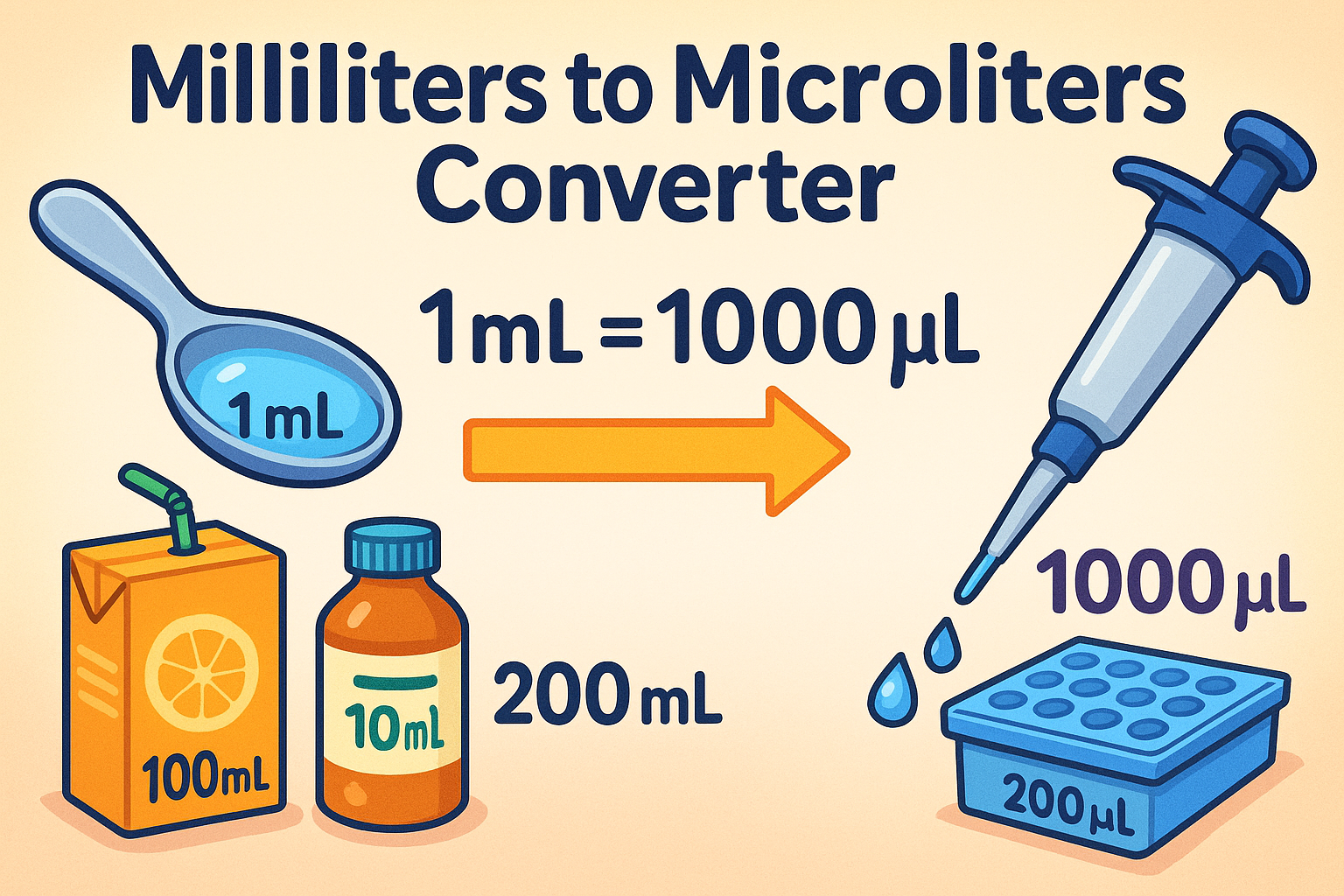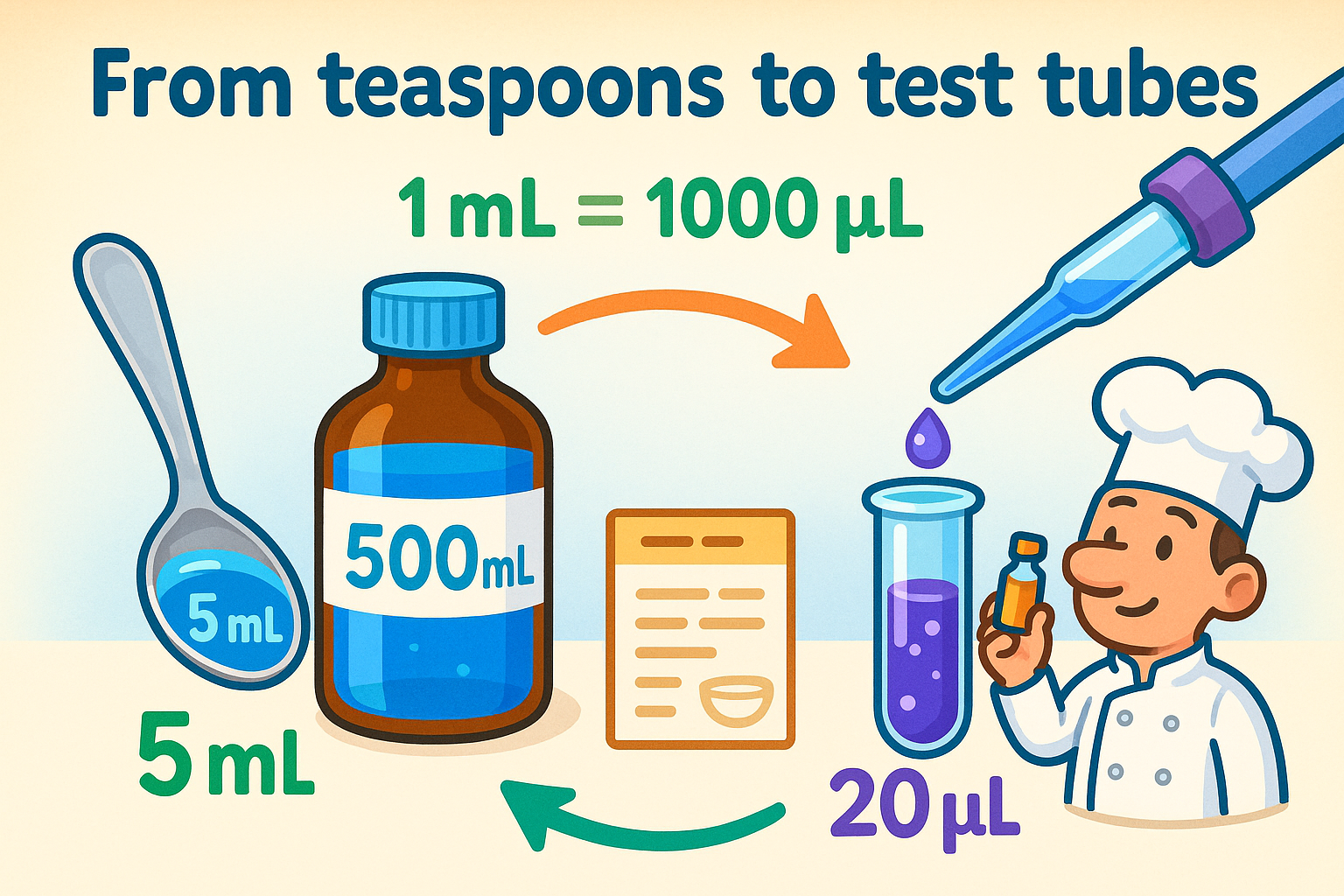milliliter to microliter – How to convert mL to µL
The conversion from milliliters to microliters captures the vast range of the metric system. Milliliters are common in kitchens, hospitals, and packaging, while microliters belong to research labs, genetics, and high-precision medicine. Switching between them links familiar quantities with the microscopic world of science.
What is a milliliter (mL)?
A milliliter is 1⁄1000 L. It equals 1 cm³ and is widely used in cooking, healthcare, and packaging. A teaspoon is about 5 mL.
What is a microliter (µL)?
A microliter is 1⁄1,000,000 L. It is written as µL and used for tiny volumes in biotechnology, medical diagnostics, and lab research. A PCR test for DNA might require only 20 µL of liquid.
Conversion formula – milliliter to microliter
The scale difference is large, but the math is exact.
The base equivalence is:1 mL = 1000 µL
To convert milliliters to microliters:1 milliliter = microliter × 1000
Examples:
2 mL = 2000 µL
If you work across multiple scales, Jetcalculator’s Volume Converter and its complete library of Conversion Tools make the switch between units fast and reliable.

Do you know?
-
In medicine: Blood samples are often analyzed in microliters, even when doses are prescribed in milliliters.
-
In genetics: Microliter volumes are standard in PCR testing and DNA sequencing, where precision is crucial.
-
In food labs: Flavor compounds and additives are tested in µL before being scaled up into mL for production.
From teaspoons to test tubes
This conversion comes alive in laboratories. A pharmaceutical company may prepare a solution in 500 mL bottles, but clinical tests use microliter drops to measure reactions. The ability to move between these scales ensures that large stock solutions can be applied in highly precise doses.
The same happens in food science, where a flavor extract measured in microliters during testing becomes part of a recipe listed in milliliters for consumer kitchens.

One scale that links home and science
The formula 1 mL = 1000 µL illustrates how a single metric system spans both the practical and the microscopic. Milliliters make sense for kitchens, hospitals, and bottles, while microliters belong to genetics, diagnostics, and cutting-edge labs.
Together, they show how measurement unites everyday life with advanced research — one system, scaled from teaspoons to test tubes.

